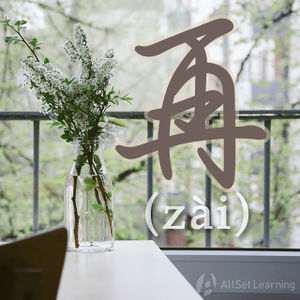Difference between revisions of "Expressing "again" in the future with "zai""
| Line 43: | Line 43: | ||
<div class="liju"> | <div class="liju"> | ||
| − | *<em>再</em> 吃 一点 。<span class="pinyin"><em>Zài</em> chī yīdiǎn.</span><span class="trans">Eat more.</span> | + | *<em>再</em> 吃 <strong>一点</strong> 。<span class="pinyin"><em>Zài</em> chī <strong>yīdiǎn</strong>.</span><span class="trans">Eat more.</span> |
| − | *<em>再</em> 点 | + | *<em>再</em> 点 <strong>几个 菜</strong> 吧 。<span class="pinyin"><em>Zài</em> diǎn <strong>jǐ gè cài</strong> ba.</span><span class="trans">Let's order some more dishes.</span> |
| − | *服务员 ,<em>再</em> 来 两 瓶 啤酒 。<span class="pinyin">Fúwùyuán, <em>zài</em> lái liǎng píng píjiǔ.</span><span class="trans">Waiter, two more bottles of beer, please.</span> | + | *服务员 ,<em>再</em> 来 <strong>两 瓶 啤酒</strong> 。<span class="pinyin">Fúwùyuán, <em>zài</em> lái <strong>liǎng píng píjiǔ</strong>.</span><span class="trans">Waiter, two more bottles of beer, please.</span> |
| − | * | + | *<em>再</em> 给 我 <strong>几个 菜</strong>三天 时间 。<span class="pinyin"><em>Zài</em> gěi wǒ <strong>sān tiān shíjiān</strong>.</span><span class="trans">Give me another three days.</span> |
| − | *我 能 不 能 <em>再</em> 拿 两 个 ?<span class="pinyin">Wǒ néng bu néng <em>zài</em> ná liǎng gè?</span><span class="trans">Can I take two more?</span> | + | *我 能 不 能 <em>再</em> 拿 <strong>两 个</strong> ?<span class="pinyin">Wǒ néng bu néng <em>zài</em> ná <strong>liǎng gè</strong>?</span><span class="trans">Can I take two more?</span> |
</div> | </div> | ||
Revision as of 08:45, 25 May 2018
-
Level
-
Similar to
- Expressing "again" in the past with "you" (B1)
- Expressing "the other" with "lingwai" (B1)
- Sequencing with "xian" and "zai" (B1)
- Comparing "zai" and "you" (B2)
- Expressing "never again" with "zai ye bu" (B2)
- Expressing "over and over again" with "zaisan" (B2)
- Expressing a last chance with "zaibu... jiu..." (B2)
- Expressing "even so" with "zaibu... ye..." (C1)
-
Used for
-
Keywords
While 又 (yòu) is used for "again" in the past, 再 (zài) is used for "again" in the future. That is, 再 is used when something has happened once and it will happen again.
Contents
Used as "Again"
The basic structure for using the future "again" is:
Structure
Subj. + 再 + [Verb Phrase]
Examples
- 我们 明年 再 来 。We'll come again next year.
- 再 试 一下 。Try it again.
- 你 可以 再 说 一 遍 吗 ?Can you please say it again?
- 这 本 书 我 要 再 看 一 遍 。I want to read this book again.
- 你 应该 再 复习 一 遍 。You should review it again.
In fact, this structure is present in one of the most common Chinese phrases: "再见!" In this case, it literally means "See you again!"
Used as "Another" or "Some More"
The English word "another" is often avoided altogether by using 再.
Structure
Subj. + 再 + Verb + Obj.
In this case, the object includes a quantity phrase.
Examples
- 再 吃 一点 。Eat more.
- 再 点 几个 菜 吧 。Let's order some more dishes.
- 服务员 ,再 来 两 瓶 啤酒 。Waiter, two more bottles of beer, please.
- 再 给 我 几个 菜三天 时间 。Give me another three days.
- 我 能 不 能 再 拿 两 个 ?Can I take two more?
Used for Continuous Action
Here 再 is similar to the English "for a while longer" or "keep [going/doing]."
Structure
Subj. + 再 + [Verb Phrase]
Examples
- 再 找找 。Keep looking.
- 你 再 问问 。 Keep asking and ask someone else.
- 别 急 ,再 想想 。Don't worry. Keep thinking.
- 再 聊 一会儿 。Keep talking.
- 再 等 一会儿 。Let's wait a little longer.
See also
- "Never again" with "zai ye bu"
- Sequencing with "xian" and "zai"
- Expressing "again" in the past with "you"
Sources and further reading
Books
- Integrated Chinese: Level 2, Part 1 (pp. 157) Anything Goes (无所不谈) →buy
- New Practical Chinese Reader 3 (新实用汉语课本3) (pp. 202) Anything Goes (无所不谈) →buy
Websites
- Yale Chinese Usage Dictionary: Using 再 and 又



